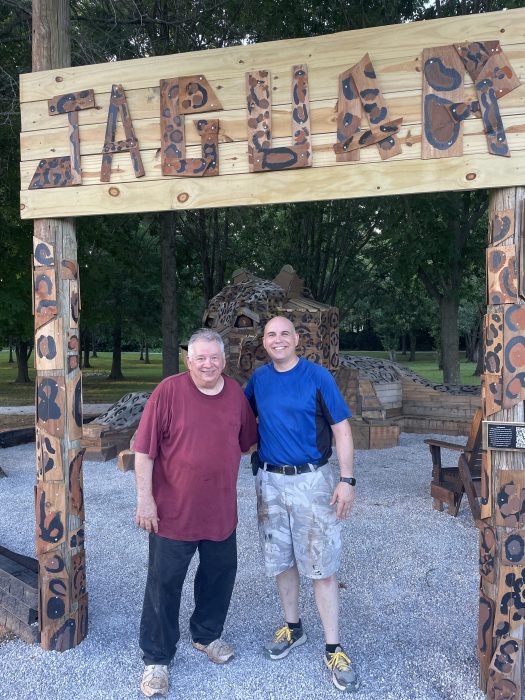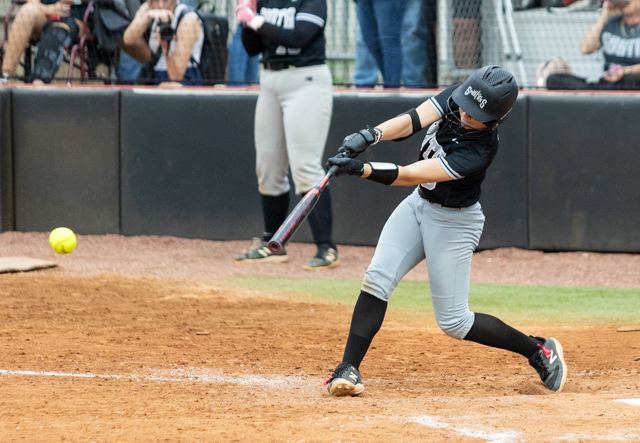Western Kentucky’s roots set in late 1800s
Published 3:42 pm Thursday, September 13, 2012

- Unidentified couple on WKU's campus c. 1920. (Photo Courtesy of Special Collections-WKU)
Harriet Downing remembers coming to Western Kentucky State Teachers College in the fall of 1941 from her hometown of Searcy, Ark.
At the time, the college – which later became Western Kentucky University – was a small school where all the faculty and students knew each other, Downing said.
“It was strictly a family situation,” she said.
The campus looked different when she was a student than it does today. Downing remembers swimming in a pool where Cravens Library is now and attending football games at the Colonnade.
She lived in one of only two dorms on campus at the time, and dorm life was different back then, she said.
“It was a whole different lifestyle,” Downing said.
No males were allowed past the lobby and curfew was 9 p.m. on weekdays and 10:30 p.m. on the weekends, she said.
“And I mean, the doors were locked,” Downing said.
Downing and her late husband, former WKU President Dero Downing, have been part of the school’s history since they were students in the 1940s, except for a few years when Dero served in the U.S. Navy.
The school began in 1906 as Western Kentucky State Normal School. At the time, Bowling Green had already had a normal school for 20 years, according to Lowell Harrison’s book “Western Kentucky University.”
Normal schools were designed to train teachers, said Carol Carraco, a history professor at WKU.
“It was a place that you sent your children to be educated,” Carraco said.
The Southern Normal School and Business College was founded in downtown Bowling Green in 1884, according to Harrison’s book. In 1906, the Southern Normal School was absorbed into the new state institution and the business college was sold.
For the first five years, Western Kentucky State Normal School remained downtown, but the location was plagued by fires and offered no room to expand, so the campus was moved to the top of the hill in 1911, where the Pleasant J. Potter College for Young Ladies had been, University Archivist Suellyn Lathrop said.
The first building constructed specifically for the state normal school was Van Meter Hall, built in 1911, Lathrop said.
Van Meter Hall has had many different uses over the years, but originally, it was the administration building as well as where students attended chapel services, Carraco said.
“Supposedly, you went to chapel or you went to hell,” Carraco said. Chapel services also served as a way to get information or announcements across to the entire student body.
Though the school’s name and buildings have changed over the years, Carraco believes the school’s early students would have experiences in common with today’s students.
“It would have been the same sort of life-changing experience as it is today,” Carraco said. Just as it is for college students today, it would have been exciting for the school’s first students to be away from home and meet new people, she said.
There were no dorms on campus until the 1920s, when Potter Hall was built as the first dorm, Lathrop said. Until then, students lived in boarding houses downtown.
In 1922, the school went through the first of its four name changes, adding Teachers College to its name to signify that four-year degrees were offered, Lathrop said.
“If you follow the names of Western, you can kind of figure out what the emphasis was,” Carraco said.
While learning to be teachers, students at the normal school taught at a training school on campus, called College High School, which was built in 1925, Lathrop said.
There was also a rural training school that taught students what it would be like to teach in a one-room schoolhouse.
“They tried to replicate whatever situation (the teacher) would be sent into,” Lathrop said.
By 1930, the term normal school had gone out of vogue, so the college removed that portion of its name, becoming Western Kentucky State Teachers College, Lathrop said.
Around this time, the school had outgrown its two classroom buildings, Recitation Hall and Cabell Hall, she said. The two buildings were torn down and construction began on Cherry Hall in 1935. It was named after the school’s first president, Henry Hardin Cherry, who didn’t want the building named after him. However, Cherry died before the building was finished in 1937, so it was named after him anyway.
Harriet Downing remembers having many of her classes in the 1940s at Cherry Hall.
“It was a great time to be a student if it weren’t for the war,” Downing said.
The Japanese attack on Pearl Harbor happened on Dec. 7, 1941, when Downing had been on campus just a few months.
She remembers everyone on campus getting involved in the war effort, with people volunteering at the American Red Cross or knitting items during chapel services at Van Meter Hall to send to soldiers overseas.
During World War II, student population decreased, but afterward, there was a huge enrollment increase because of the GI Bill, Lathrop said. A series of trailers were set up where Downing University Center is today for veterans who came back to school on the GI Bill. The area was called Veteran’s Village.
In 1948, the school’s name changed again, to Western Kentucky State College, to reflect the fact that degrees were offered in areas besides teaching, Lathrop said.
The 1950s and ’60s were years of progress and expansion for the school, with enrollment growing and new buildings popping up. Garrett Conference Center, Thompson Complex, E.A. Diddle Arena, Grise Hall and multiple dorms opened during those decades. The first African-American students came in 1956 and the first African-American faculty members joined in 1966.
In 1966, the school’s name changed for the final time, to Western Kentucky University. Becoming a university helped the school increase course offerings, offer graduate degrees and receive more recognition throughout the state, Carraco said.
Dero Downing became president of the university in 1969, and Harriet Downing said she’s proud of the difference her late husband made as president.
“Whatever decisions he made, he did it to the very best of his knowledge,” she said. “He always went the extra mile.”
There were some troubled times during Dero Downing’s presidency, Harriet Downing said. Students held rallies and marches to protest the Vietnam War, once leaving classes to gather at the Colonnade to sing peace songs and listen to anti-war speakers.
By the time Dero Downing stepped down as president in 1978, several more buildings were in place, including the Downing University Center, the Ivan Wilson Fine Arts Center, Cravens Library and Pearce-Ford Tower, which at the time was the tallest building in Kentucky.
Even when Dero Downing’s presidency ended, he and Harriet Downing remained active at WKU. Dero Downing served as chairman of the College Heights Foundation until about 10 years before his death in 2011.
“Western truly has been our life,” Harriet Downing said.
Although the university has grown to more than 20,000 students, she believes there’s still some of the family atmosphere she felt when she first came to campus.
“I hope students still think it’s a special place,” Downing said.
Part of what makes WKU special is that it’s so connected to Bowling Green, she said.
“We’ve always been very proud of the fact that Bowling Green and Western were very much the same community,” Downing said.
As students, she and her husband saw that connection, she said. The couple would walk downtown, talking about how fun it would be to come back to live in Bowling Green later in their lives.
“We really just thought it was a dream, and that dream came true,” Downing said.






